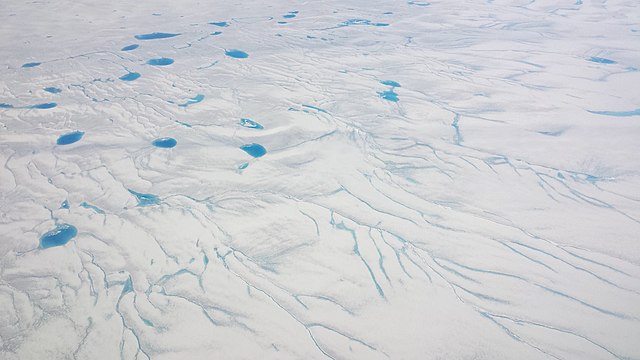
A enormous flow of ice is ebbing out of Greenland, and it’s on its way to the sea. What’s more, a new study has found that it’s been speeding up and shrinking as it melts. This will, according to the report, accelerate global sea-level rises in coming decades – even faster than previously expected.
The study mentions that within 80 years this ice stream could raise sea levels by nearly 16 millimetres – more than six times previous estimates.
More concerningly, this may not be restricted to Iceland. Climate change could be triggering an accelerating melt of large inland ice flows elsewhere, according to glacier scientist Shfaqat Abbas Khan from the Technical University of Denmark in Kongens Lyngby. And if he’s right, past research will have massively underestimated the rates at which these melting stores of ice will increase sea levels.
“It’s not something that we expected,” Khan says. “Greenland and Antarctica’s contributions to sea-level rise in the next 80 years will be significantly larger than we have predicted until now.”
Khan was part of a team that studied the Greenland Ice Stream. The ice there flows around 600 kilometres (375 miles) to the sea. This fast-moving ice contains enough water to raise sea levels by over a metre. As it approaches the coast, the ice stream splits into two glaciers.
While frozen, these glaciers work like a dam, holding back the ice behind them from rushing into the sea. However, scientists identified that when the Zachariae Isstrøm ice shelf collapsed about a decade ago, the flow of ice behind the glacier sped up. But it wasn’t clear whether those changes continued deep into Greenland’s interior.
In order to measure small rates of the ice stream movements far inland, Khan and his colleagues used GPS. The team analysed data from three stations along the ice stream’s main section between 90 and 190 kilometres inland.
The team found that the ice stream sped up between 2016 and 2019 at all three points. In that time, the speed at the station farthest inland had increased by over 7 meters per year, to now around 351 meters per year.
Data subsequently collected by satellites and aircraft surveys backed up the GPS finding and also showed that the ice stream is shrinking, or thinning, which began in 2011.
“This is showing that glaciers are responding along their length faster than we had thought previously,” says Leigh Stearns, a glacier expert at the University of Kansas in Lawrence.
Using the new data they updated their computer modelling to forecast the ice stream’s impact on sea-level rise. This latest model now predicts that by 2100, the ice stream will have contributed between about 14 to 16 millimetres to global sea-level rise. This is as much as the entire Greenland ice sheet has raised seas in the last 50 years.
Khan’s group now plans to investigate inland sections of other large ice flows in Greenland and Antarctica.
It is clear that we are not doing nearly enough to prevent catastrophic effects of global warming.
——————————————————————————
At Natural World Fund, we are passionate about stopping the decline in our wildlife.
The declines in our wildlife is shocking and frightening. Without much more support, many of the animals we know and love will continue in their declines towards extinction.
When you help to restore a patch of degraded land through rewilding to forests, meadows, or wetlands, you have a massive impact on the biodiversity at a local level. You give animals a home and food that they otherwise would not have had, and it has a positive snowball effect for the food chain.
We are convinced that this is much better for the UK than growing lots of fast-growing coniferous trees, solely to remove carbon, that don’t actually help our animals to thrive.
This is why we stand for restoring nature in the UK through responsible rewilding. For us, it is the right thing to do. Let’s do what’s right for nature!
Support our work today at https://naturalworldfund.com/ and join in the solution!


Thanks!